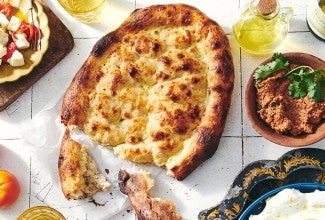Armenian “fingerprint flatbread” is chewy, crusty, and very fun to make
Golden, puffy matnakash is simple, but takes a few key steps to get right.
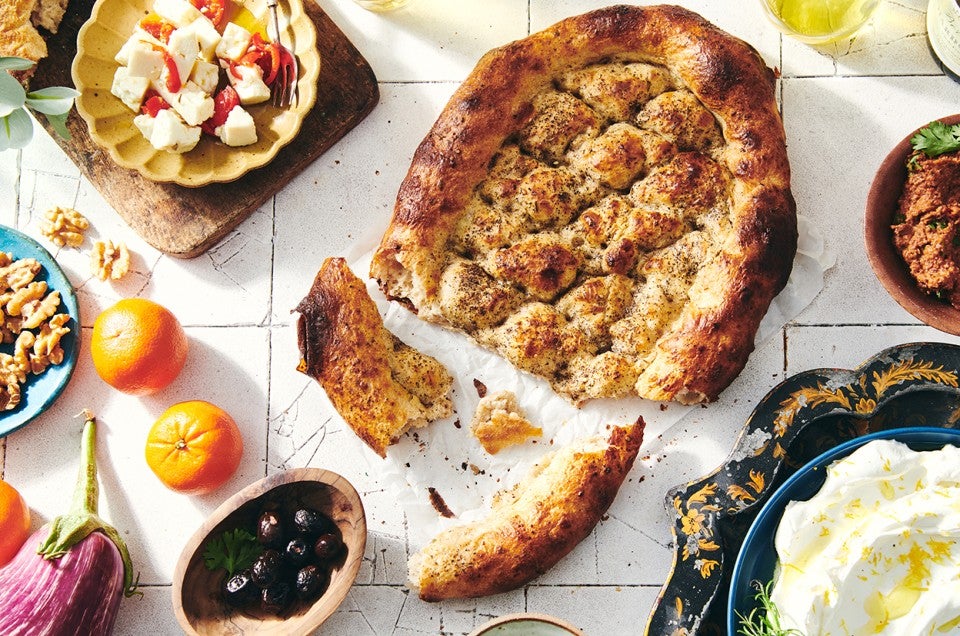

Despite being Armenian, I did not grow up eating matnakash, the golden, puffy flatbread distinguished by its signature shaping and tender, open crumb. My family comes from “Western” Armenia, which is part of modern-day Turkey, while this oval, finger-dimpled flatbread comes from “Eastern” Armenia, now known as the Republic of Armenia. But once I finally tried matnakash myself, I fell in love with its plush texture, quilted appearance, and fun, satisfying-to-perform shaping method. I immediately knew I needed to have a recipe of my own.
Like lavash and pita, matnakash is usually served as part of a mezze spread or alongside a meal. The name means “pulled by fingers,” referring to the way the baker shapes the soft dough by dimpling and elongating it with their fingertips. It’s a cousin of numerous other regional “fingerprint” flatbreads, including Iranian barbari bread, Afghan naan, Turkish pide, and Lebanese manaqish, each of which are shaped similarly but vary in thickness, overall size, and the toppings (if any) that are applied to it. Like all its regional relatives, matnakash is a relatively simple flatbread, but there are a few key elements necessary to make it great.
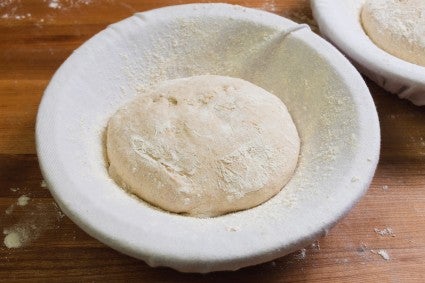
Matnakash was traditionally fermented with sourdough, though many modern recipes use yeast instead; beyond that, it’s typically made with nothing more than flour, water, and salt, which make a plush, soft-textured dough with the tang of long fermentation.
I created a soft, yeasted dough that ferments at room temperature for a few hours before spending the night in the fridge, which helps develop complexity of flavor. To further soften the bread’s texture, I use a flour scald in the dough — a technique also known as a yudane (and similar to tangzhong) in Asian bread baking. In a scald, boiling water is poured over the flour (in this case, I use rye or whole wheat, which adds another layer of flavor to the dough, as well as enhances its color), causing its starches to gel into a thick paste. Once incorporated into a dough, the paste acts as a moisture reserve, giving the bread a long-lasting, plush texture — especially helpful since one of the drawbacks of flatbreads is their relatively short shelf-life, as they’re quick to dry out.
After the dough sits in the fridge overnight, it's divided and shaped into rounds, each of which proofs one last time in a banneton or proofing basket. Like the flour scald, the use of a banneton is not traditional to matnakash, but it serves a useful purpose: to make the soft dough easy to move around once proofed without deflating or overworking it, potentially leaving it tough. (If you don’t have a banneton, a towel-lined bowl will work nicely in its place.)
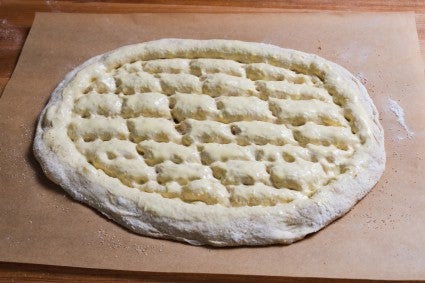
Before dimpling, the dough is brushed with a glaze to keep the baker’s fingers from sticking and to give the baked bread a tender, glossy, and nicely browned crust (and act as a glue to hold toppings in place, if using).
In various fingerprint flatbreads, the components of this wash vary widely from recipe to recipe and region to region. The various glazes I found in my research included: a mixture of water and honey, molasses, pomegranate molasses, or date or grape syrup; whole eggs or egg yolks; yogurt; brewed black tea; or a loose, gelatinized mixture of flour and water (another flour scald). Some recipes use a combination of these approaches. Matnakash itself is usually either glazed with a cooked flour paste or black tea.
I tested each of these glazes in search of one that was both practical and effective. Eggs or egg yolks gave the crust a lovely glossy sheen and decent browning, and a wash of yogurt gave excellent, rapid browning. (Quickly browning also helped keep the interior of the bread from overcooking.) In the end, I chose a mixture of whole egg and yogurt, to provide both gloss and color.
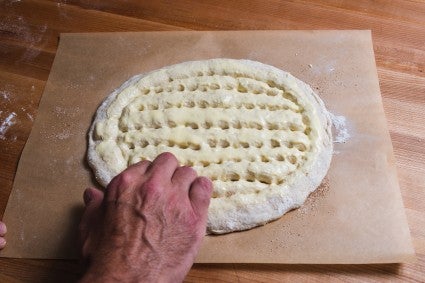
The characteristic rows of dimples are one of the signature hallmarks of matnakash. While the pattern is common to numerous other regional breads, during the communist Soviet Armenian era it was reinterpreted to represent an agricultural field, with the parallel rows of dimples said to depict furrows of freshly tilled soil.
When I began making matnakash, many of the furrows I created — even those that looked well-defined before baking — tended to lose definition as the breads puffed up in the oven. Worse, they sometimes puffed irregularly, leaving the bread less of a farm field and more of a hilly landscape. After a lot of trial and error (as well as watching bakers in Turkey and videos online), I learned the trick to dimpled bread that stays dimpled and a flatbread that stays flat is to be way more forceful than you might imagine at first. For starters, you want to push your fingertips all the way through the dough to the parchment beneath. And you want to go over each set of dimples at least twice, to really define them well.
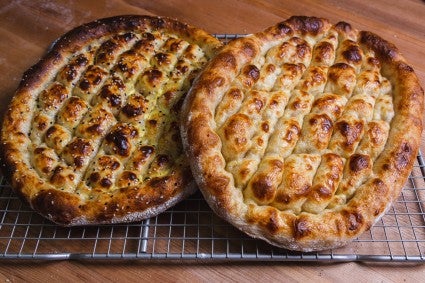
Traditionally, matnakash never gets adorned with a topping — it’s wonderful just as it is. But the fact that sesame and/or nigella appears on so many regional relatives of matnakash and on other Armenian breads is all the permission I need to add seeds or spice blends to mine when I'm in the mood. (Nigella, sometimes misleadingly called “black sesame,” is the seed of a Mediterranean plant with a slightly bitter flavor and an aroma with hints of citrus, pine, and menthol.) I usually like to use a 5:1 mixture of sesame and nigella, but I've also been known to top mine with a dusting of za’atar or even some Everything Bagel Topping.
Topped or not, matnakash is a bread that is as fun (and easy) to make as it is to eat. Time to let your fingers do the walking.
Cover photo and food styling by Liz Neily.
